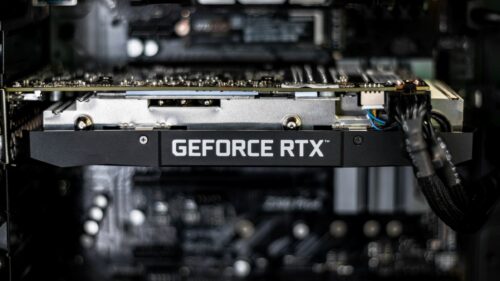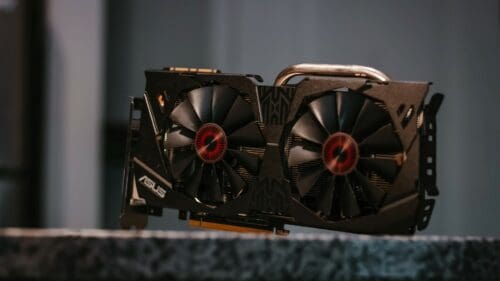In this article, I will be telling you why the Nvidia GeForce GTX 1650 SUPER is the budget king for Plex transcoding. But before we get into the reasons why that is, you need to know what transcoding even is, why you shouldn’t use your CPU to do it, and why there currently aren’t any viable alternatives to Nvidia.
The ability to watch your films and series from wherever you want is undoubtedly one of Plex’s best features. However, as resolutions keep getting higher and bitrates continue to go up, your connection outside your home network might not be fast enough to be able to smoothly stream the video you’re attempting to watch. To make that possible, Plex can automatically transcode and video in real-time. To simplify things, users will often simply call that function transcoding.
By default, the Plex Media Server uses software-based transcoding, which uses the CPU. The problem with that is that CPUs aren’t really built to transcode videos. Even a powerful CPU will struggle to transcode multiple videos simultaneously. Transcoding a single 4K, 40Mbps, 8-bit HEVC video down to 1080p, 10Mbps would require a CPU with a PassMark score of over 12,000. In other words, the six-core AMD Ryzen 5 3500X could only transcode on such video at a time. If only there were a more efficient alternative…
Why a GPU is better at Plex transcoding
By using a graphics card to transcode videos, or as Plex calls it, hardware-accelerated streaming, the dedicated onboard video encoder will be used, freeing your CPU up for other, more important tasks. The video encoder is faster and uses less processing power during video streaming and is, in almost all situations, the better way of doing things.
Streamers will use the same encoder on their graphics cards to encode their videos before pushing them out to their viewers. As the encoder is a dedicated chip, they can expect almost the same performance in games and their CPU won’t be bogged down.
The downsides of using a GPU for Plex transcoding
There are a few potential downsides of using a graphics card for Plex transcoding (hardware-accelerated streaming) in comparison to software (CPU) transcoding. For one, the quality of the video may be lower, especially when streaming at resolutions below 720p or when using lower bit rate source material. In general, GPU transcoding is faster but slightly lower-quality than software transcoding.
Newer GPUs will perform significantly better at transcoding compared to older generations. Not just concerning speed, but also in terms of quality. But don’t fret, a GPU with a decent video encoder won’t cost an arm and a leg (that’s the reason for this article).
Another downside for some will be that hardware-accelerated transcoding is only available for Plex Pass users. But in all honesty, if you haven’t purchased the Plex Pass lifetime subscription for $119.99, you are missing out!
Hardware-encoding and HDR
You will undoubtedly read many threads and articles warning against using your GPU for hardware-encoding because of what it does to HDR videos. The Plex development team is currently working on improving the transcoding of HDR content, and a fix is already available as a preview for Plex Pass subscribers! When using Nvidia’s encoder, you will have to be running your Plex Media Server on a Linux machine or in a Docker container, as you would with Unraid. To be able to enable the feature in Unraid, you are required to be running Unraid OS version 6.9.0 beta 35 or newer.
Not every GPU’s video encoder is created equally
As things stand, only Nvidia GPUs with the Nvidia encoder, which is shortened to NVENC, should be taken into consideration for transcoding on your Plex Media Server. While it would be nice to have the option to go with AMD Radeon, their encoder just isn’t up to scratch. Perhaps one day they will catch up, but that day is not today.
NVENC on the Nvidia GeForce GTX 1650 SUPER
With every new generation of Nvidia graphics cards, the onboard video encoder (NVENC) gets better. Some improvements are gradual and others make a big difference in terms of performance and quality. The sixth-generation of NVENC, which was introduced with the Nvidia RTX 20 and GTX 16 series of GPUs, was the last major improvement. It is faster and provides superb quality compared to the fifth-generation (found on Volta and certain Turing cards).
Before you start thinking that the regular, non-SUPER Nvidia GeForce GTX 1650 might be more economical, you need to know that it is the only exception on the list of supported GPUs. The GTX 1650 does not have the same video encoder as the other GTX 16 series cards and instead uses the Volta NVENC, which is significantly worse.


The Nvidia GeForce GTX 1650 SUPER, however, does not. And as it can be bought for around $170 that makes it the budget king for Plex transcoding. According to Reddit user /u/itoremymind, it can comfortably handle up to 14 1080p to 720p hardware transcodes. That does put it well behind the GTX 1660 and GTX 1660 Ti, which can handle around 20 transcodes, but it does come in at a much lower cost.
The bottleneck on the GTX 1650 SUPER isn’t the clock speed, but undoubtedly the amount of RAM (4 GB GDDR6). A GTX 1070 or GTX 1070 Ti with 8 GB of memory could possibly be found at a lower price and would be able to power more transcodes (around 22) but, as with the GTX 1650, at the cost of quality.
A word on Nvidia drivers for GeForce cards
It’s fair to say that Nvidia doesn’t want their consumer-targeted GeForce graphics cards used in a Plex Media Server for transcoding multiple videos simultaneously. Officially, all GeForce cards are limited to no more than 2 simultaneously encoding video streams. It isn’t a hardware limitation, but one imposed by NVIDIA’s drivers.
I am in no way condoning the use of what I am about to mention, but it is only fair to let you know that the driver limitation can be circumvented. By applying an unofficial patch to the drivers, you can successfully unlock the full potential of your Nvidia GeForce GTX 1650 SUPER. I am in no way affiliated with the project, nor do I support what the developers are doing. What you do with your Plex Media Server is your responsibility.



Under HW-Encoding and HDR, you state “When using Nvidia’s encoder you will have to be running your Plex Media Server on a Linux machine or in a Docker container, as you would with Unraid. “. Will it not run in Windows?
Unfortunately, it is still only available for Linux and Docker. See here: https://support.plex.tv/articles/hdr-to-sdr-tone-mapping/
I have no idea whether you can get PMS running on Docker on Windows.
Lol in 2021
This article really highlights the clown show of the 2021 supply chain